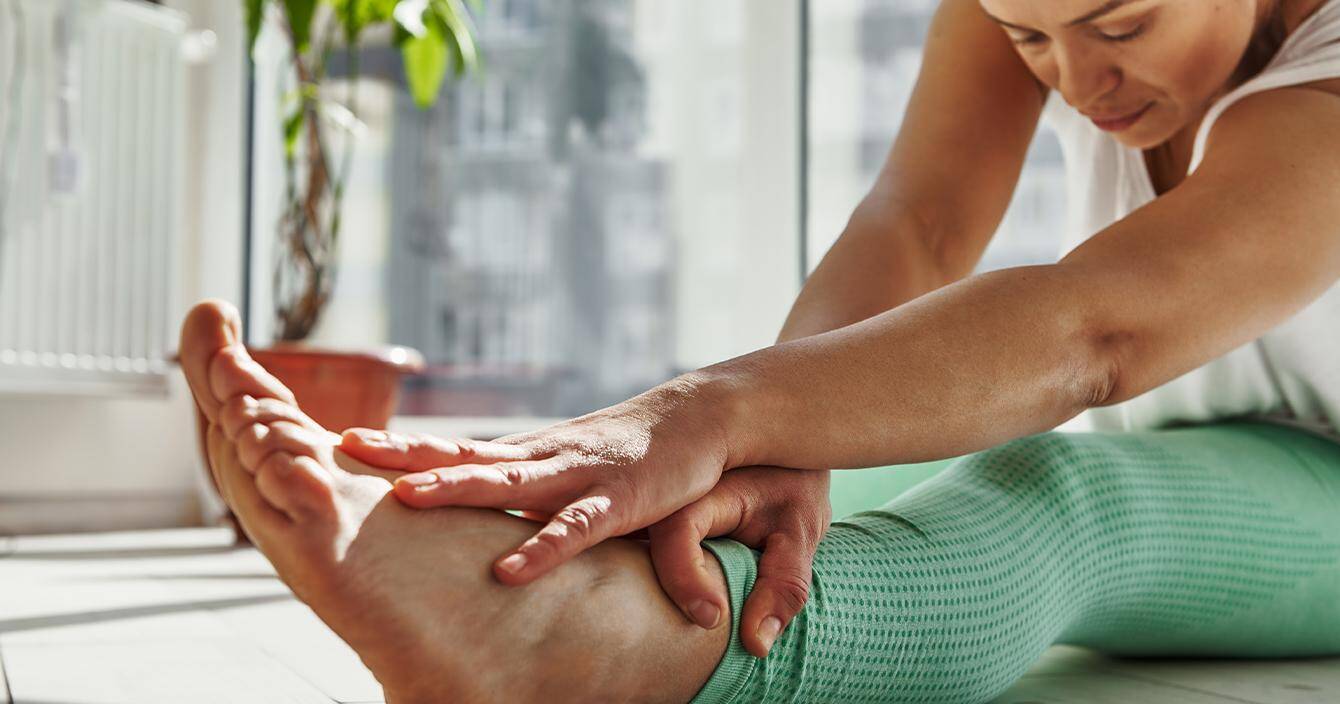
Joint Hypermobility Syndrome (JHS) is a benign condition in which joints are able to move beyond their normal range. It is thought that this condition has a genetic component. It is most prevalent in childhood and as the body naturally becomes less flexible, signs and symptoms tend to improve with age.
Hypermobile joints are also a feature of a rare condition called Ehlers-Danlos syndrome. The excessive movement in the joints places them at greater risk for injury. Symptoms of hypermobile joints include joint pain and a higher incidence of dislocation and sprains. Scoliosis of the spine is also more commonly seen in individuals with JHS. Signs that an individual has hypermobile joints include hyperextension of the knees and elbows beyond ten degrees and an ability to touch the thumb to the forearm. When an individual has no symptoms related to this syndrome, treatment is unnecessary. Treatment will be dependent on how the syndrome manifests itself. Medication may be used to treat pain and inflammation. Exercises may be given to improve strength and stability around the joint while preventing potential injury to the joint.
Research has found that there are some essential components to therapy and exercise routines to improve joint mobility and control1. These components include posture, proprioception, strength, and motor control1. Incorporating these components is important for helping to relieve and prevent further joint pain1. Another study found that proprioception was impaired in individuals with benign joint hypermobility syndrome2. Furthermore, proprioception exercises reduce pain and improve functional status in individuals with this syndrome2.
Whole Body Vibration Plate Can Help.
Whole Body Vibration (WBV) has been found to effectively impact muscle strength3, 4 and proprioception3, 5, 6 in various populations. While these variables are relevant to individuals with JHS, it is difficult to determine if the same benefits would be found in this population.
There are no studies looking at the benefits of whole body vibration on individuals with JHS. Due to the range of symptoms of JHS, it is beneficial that an individual with JHS discuss the addition of a whole body vibration plate to his/her exercise routine with a health care provider. This is essential if an individual is experiencing any symptoms due to JHS. It is important that the health care provider understand whole body vibration so he/she can help determine if the benefits will outweigh any risks or possible contraindications. Contraindications to using a whole body vibration that may be relevant to JHS include acute inflammation.
Once an individual has determined along with his/her health care provider that it is safe to use a whole body vibration plate, it should be started at a lower intensity and duration, and symptoms should be monitored. Whole body vibration training should be discontinued if any symptoms related to JHS become worse and changes in symptoms should be discussed with a physician. Individuals with JHS should follow any restrictions and bracing that they are using in their current exercise routine. Once an individual has become comfortable with the whole body vibration plate machine, and no changes in symptoms occur, the intensity of exercises can be increased. Individuals with JHS should avoid any exercises on the whole body vibration platform that place a joint in a position that could result in an unnecessary strain or place it in a hypermobile position. In general, if an individual experiences shortness of breath, pain or dizziness when using WBV, it should be discontinued immediately.
References
- Keer R, Simmonds J. 2011. Joint protection and physical rehabilitation of the adult with hypermobility syndrome, Current Opinion in Rheumatology, 23(2), 131-6.
- Sahin N, Baskent A, Cakmak A, Salli A, Ugurlu H, Berker E. 2008. Evaluation of knee proprioception and effects of proprioception exercise in patients with benign joint hypermobility syndrome, Rheumatology Interational, 28(10), 995-1000.
- Trans T, Aaboe J, Henriksen M, Christensen R, Bliddal H, Lund H. 2009. Effect of whole body vibration exercise on muscle strength and proprioception in females with knee osteoarthritis, Knee, 16(4), 256-61.
- Verschueren SM, Roelants M, Delecluse C, Swinnen S, Vanderschueren D, Boonen S. 2004. Effect of 6-month whole body vibration training on hip density, muscle strength, and postural control in postmenopausal women: a randomized controlled pilot study, Journal of Bone Mineral Research, 19(3), 352-9.
- Moezy A, Olyaei G, Hadian M, Razi M, Faghihzadeh S. 2008. A comparative study of whole body vibration training and conventional training on knee proprioception and postural stability after anterior cruciate ligament reconstruction, British Journal of Sports Medicine, 42(5), 373-8.
- Fontana TL, Richardson CA, Stanton WR. 2005. The effect of weight-bearing exercise with low frequency, whole body vibration on lumbosacral proprioception: a pilot study on normal subjects, Australian Journal of Physiotherapy, 51(4), 259-63.
Are you a chiropractor who is currently using or interested in using whole body vibration in your practice? We work with chiropractors all over North America. Contact us for more information on our chiropractor program.
NOTE: The information presented is not intended to diagnose or prescribe. Pain can be from many causes, be sure to consult your health care professional before starting this or any exercise regime.
